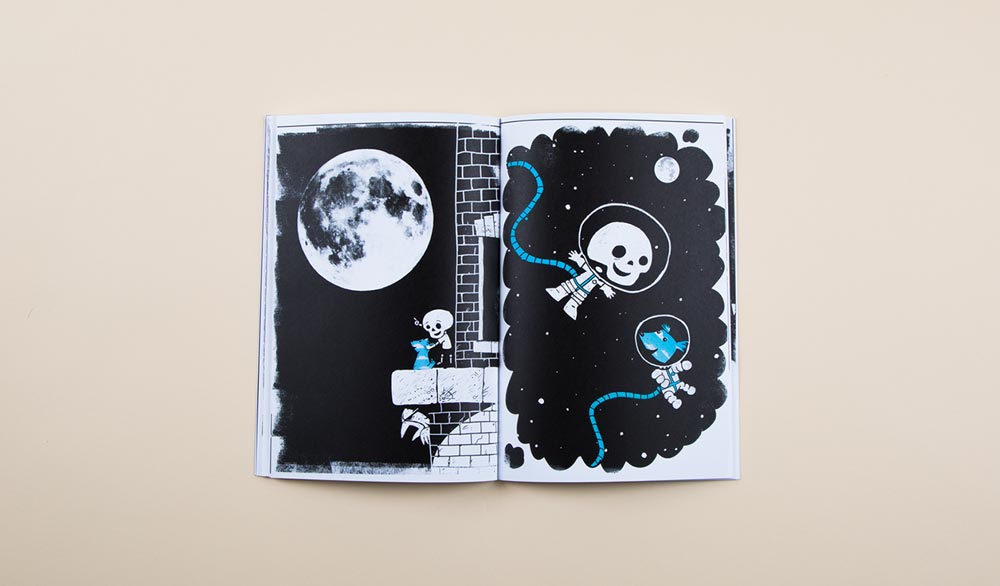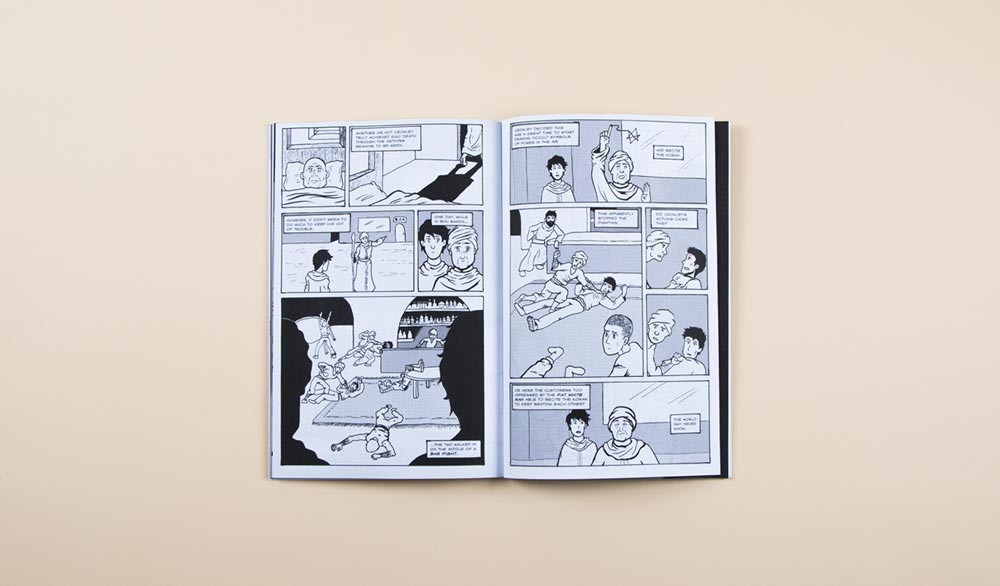Kent’s Book Corner: Books in (Mostly) Black and White
I’ve always been a big fan of black and white illustrations, particularly when they’re used to tell a story. There’s something about black and white that strips away everything that’s not vital, revealing truths and ambiguities. It also gets back to the fundamentals of art: line, shadow, illumination—while letting the artist’s graphic design sensibilities take flight. So, with that in mind, enjoy this month’s selection of featured books that take a walk on the (mostly) monochromatic side.

The Silent Ballad of Billy and Blue
6×9 Trade Book
Made with Adobe InDesign
This sweet and slightly morbid story of a lonely skeleton boy who finds a friend in a lost dog holds the distinction of being one of roughly five Blurb books to make me cry. Allan Farrow’s stark (mostly) monochromatic images are astounding in their texture, line, and use of negative space. Blue, the dog, is the only element of the story given a color treatment. While wordless, the story is expertly told through Farrow’s innovative layouts and touching image choices. A perfect book for spooky kids with an existential mindset, or adults who enjoy long walks in the graveyard.

Magick in the Desert
6×9 Trade Book
Made with Adobe InDesign
Aleister Crowley was an early 20th century mystic, magician, prankster, adventurer, and all-around controversial fellow, famously called “the most evil man alive.” Jeremy Sandler’s comic bio deftly chronicles one of Crowley’s many spiritual quests, this one through the deserts of Algeria. Sandler’s straightforward reportage neither makes the case for or against the veracity of Crowley’s fantastic claims, although his illustrations of Crowley’s reported visions kind of make you want to believe it’s all true.

Neversink
10×8 Photo Book
Made with PDF Uploader
Neversink is a story of urban alienation, jealousy, and spite. Jonas Garson uses stark and spidery line drawings to give us a New York City that’s just the right amount of creepy. The first half of the book is told without words. And when the words come in, that’s where the trouble really begins and the twists and turns lead to a chilling conclusion.


This post doesn't have any comment. Be the first one!